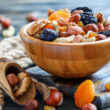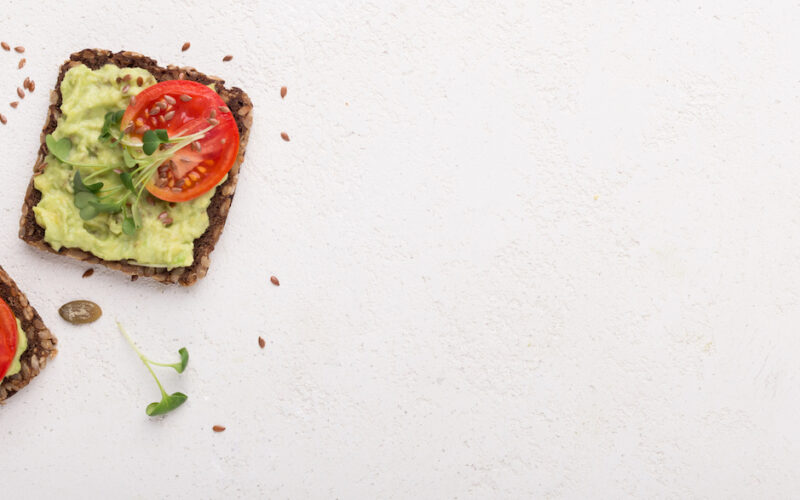It’s tempting to jump on the latest diet bandwagon in the hopes of losing weight fast. But as you may know from trial and error, fad diets often set you up for failure. Think about it: Any regimen that bans your favorite foods (or entire food groups) and makes it difficult to share meals with friends and family is ultimately impossible to stick with over time.
Experts agree that the most effective way to lose weight — and keep it off — is to make smart changes to your everyday eating habits. One of the best ways to do this is by swapping ingredients — taking out high-fat and high-calorie ingredients and replacing them with similar-tasting healthier alternatives.
“You’d be amazed how many calories and fat grams you can shave off your meals — and not miss any of them,” says Jason Graham, executive chef at Cal-a-Vie Health Spa near San Diego.
Check out Graham’s smart swaps below and lose weight happily.
1. Use fat-free yogurt for dips and dressings.
You can substitute plain, fat-free yogurt for sour cream or mayonnaise in almost any recipe. Think veggie dips, creamy salad dressings or toppings for tacos, fajitas, chili and baked potatoes. Not only will you get a tangy taste with less fat and fewer calories, yogurt is also a great source of protein.
Greek-style yogurt works best for dips and as a topping because it’s as thick as sour cream. When making creamy salad dressing, use regular yogurt.
Bottom line for your waistline: A few dollops (a quarter cup) of fat-free yogurt contain about 30 calories, which saves you 93 calories and 11 grams of fat compared to sour cream.
2. Swap more egg whites for egg yolks.
Whether baking or making breakfast, using egg whites instead of whole eggs can significantly cut the fat content of your favorite dishes. A good guideline for recipes: Substitute two egg whites for every whole egg, says Graham. For example, instead of a three-egg omelet or scrambled eggs, use one whole egg and four egg whites. When baking, however, replace no more than half the number of eggs with egg whites for best results.
Bottom line for your waistline: Egg whites have zero fat and only 17 calories (but still retain half the protein of a whole egg). That means, for every yolk you toss, you cut nearly 5 grams of fat and 57 calories.
3. Substitute applesauce for oil or shortening.
Many bread and dessert recipes call for vegetable oil or shortening, two diet disasters. But you can have your cake (or muffins or cookies) and lose weight too! The secret: Trade half the oil or shortening for unsweetened applesauce. For instance, if a cake recipe calls for 1/2 cup of oil, mix in only 1/4 cup oil and 1/4 cup applesauce. It will be lighter yet still meet the high standards of your discriminating taste buds.
Bottom line for your waistline: A quarter cup of applesauce is nearly fat free and has only 25 calories. The same amount of oil or shortening, by contrast, packs more than 50 grams of fat and 450 calories. Per slice of cake, that translates to a savings of about 6 grams of fat and 50 calories.
4. Cut the oil content in vinaigrette.
“Most vinaigrettes have a 3-to-1 oil-to-vinegar ratio,” says Graham. And although olive oil is healthy, it does have a high fat and calorie content. Too much of it can be a diet detriment, despite the fact that you’re eating salad. So try substituting lemon juice or more vinegar for one or two parts of olive oil, or mix either with pre-bottled oil-based dressing. You’ll get a similar taste but more diet-friendly greens.
Graham also offers Cal-a-Vie’s vinaigrette recipe: In a blender, combine 3 cups water, 3 tablespoons olive oil, 1/4 cup vinegar (red wine, balsamic or apple cider), salt, pepper and your choice of herbs and spices, plus a pinch of xanthan gum. (Xanthan gum is a tasteless corn product chefs often use as a thickener. You’ll find it at a health food or gourmet grocery store.) “A little xanthan gum goes a long way,” says Graham. “Start with a dash and check the consistency before adding more.”
Bottom line for your waistline: Traditional vinaigrettes can contain between 10 and 15 grams of fat and have about 100 to 140 calories per 2-tablespoon serving. Replacing one part olive oil with lemon juice or vinegar will eliminate about 5 grams of fat and 50 calories per serving. Graham’s Cal-a-Vie recipe, on the other hand, contains less than 2 grams of fat and has a mere 17 calories per serving.
5. Pour coconut milk in place of heavy cream.
Most creamy soups get their richness and silky texture from heavy cream, which as the name implies, is loaded with fat. But cream isn’t the only ingredient that delivers rich flavor and texture. “Omit all the heavy cream and substitute half the amount with canned light coconut milk and half the amount with chicken or vegetable stock,” suggests Graham.
Bottom line for your waistline: One tablespoon of heavy cream packs almost 6 grams of fat and 52 calories. The same amount of coconut milk and broth has only 1 gram of fat and 11 calories, a difference of 5 grams of fat and 41 calories.
6. Saute with cooking spray.
Instead of using a tablespoon or two of oil or butter to saute vegetables, spray the pan with nonstick spray and drizzle only 1 teaspoon of olive oil or less. “The oil will thin and spread out as it heats up,” explains Graham. “You still get the rich taste of cooking with oil but with fewer calories and fat.”
Bottom line for your waistline: A tablespoon of extra-virgin olive oil has a full 14 grams of fat and about 126 calories. By combining fat-and-calorie-free cooking spray with only 1 teaspoon of olive oil, you’ll purge your healthy veggies of nearly 10 grams of fat and 84 calories.
Making small changes can add up to major weight loss over time. If you cut a mere 117 calories a day, for example, you’ll lose a pound a month. To drop a pound a week, shave 250 calories from your daily meals and burn 250 calories throughout the day. (Try walking for an hour or ride your bike for 30 minutes.) Regardless of the route you take or tricks you use, you’ll be on track for successful, long-term weight loss, all while eating your favorite foods. What could be more satisfying than that?






